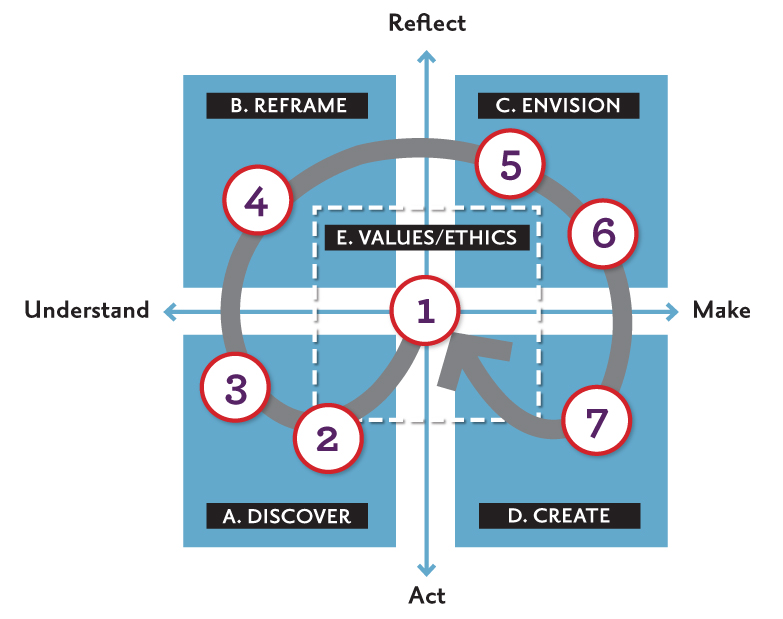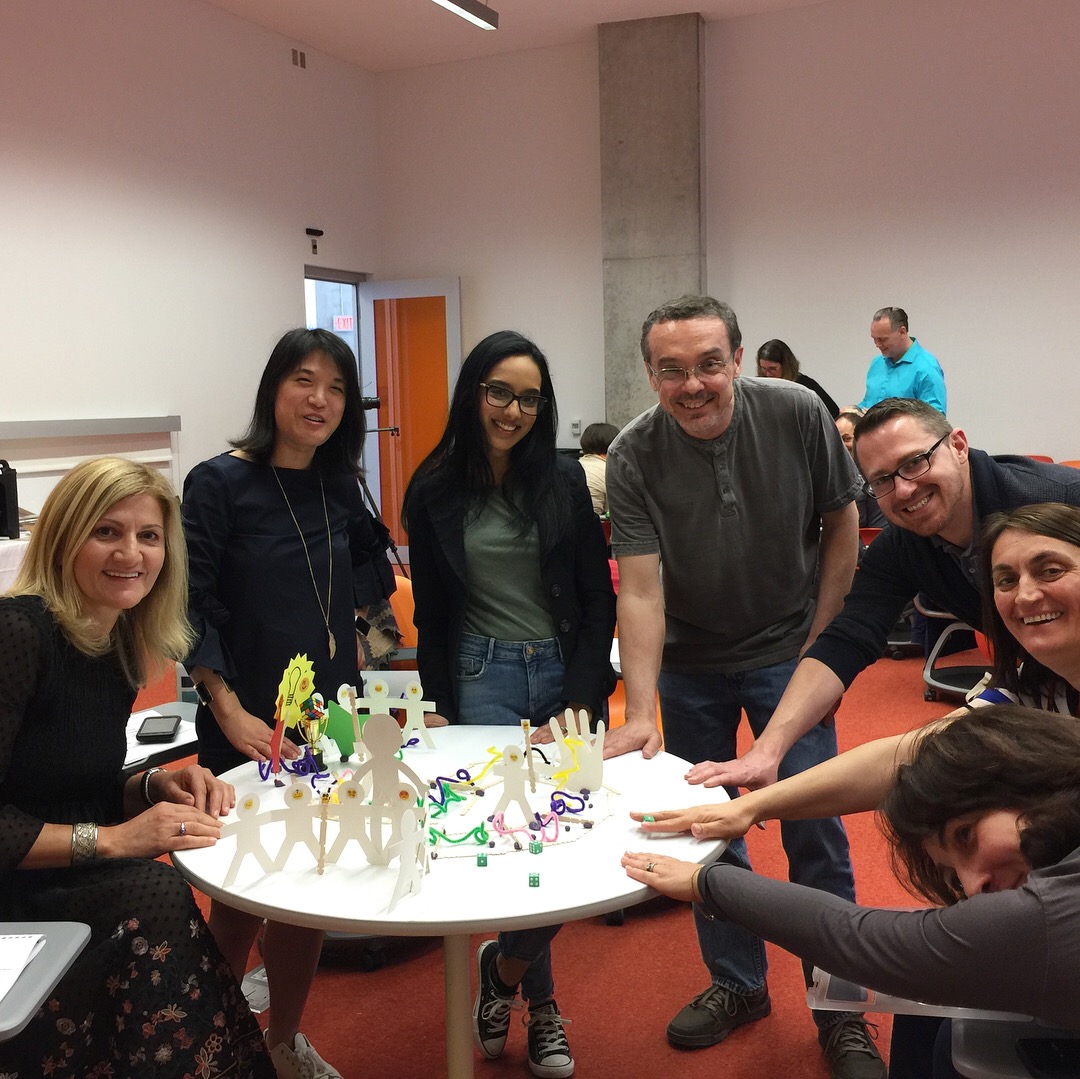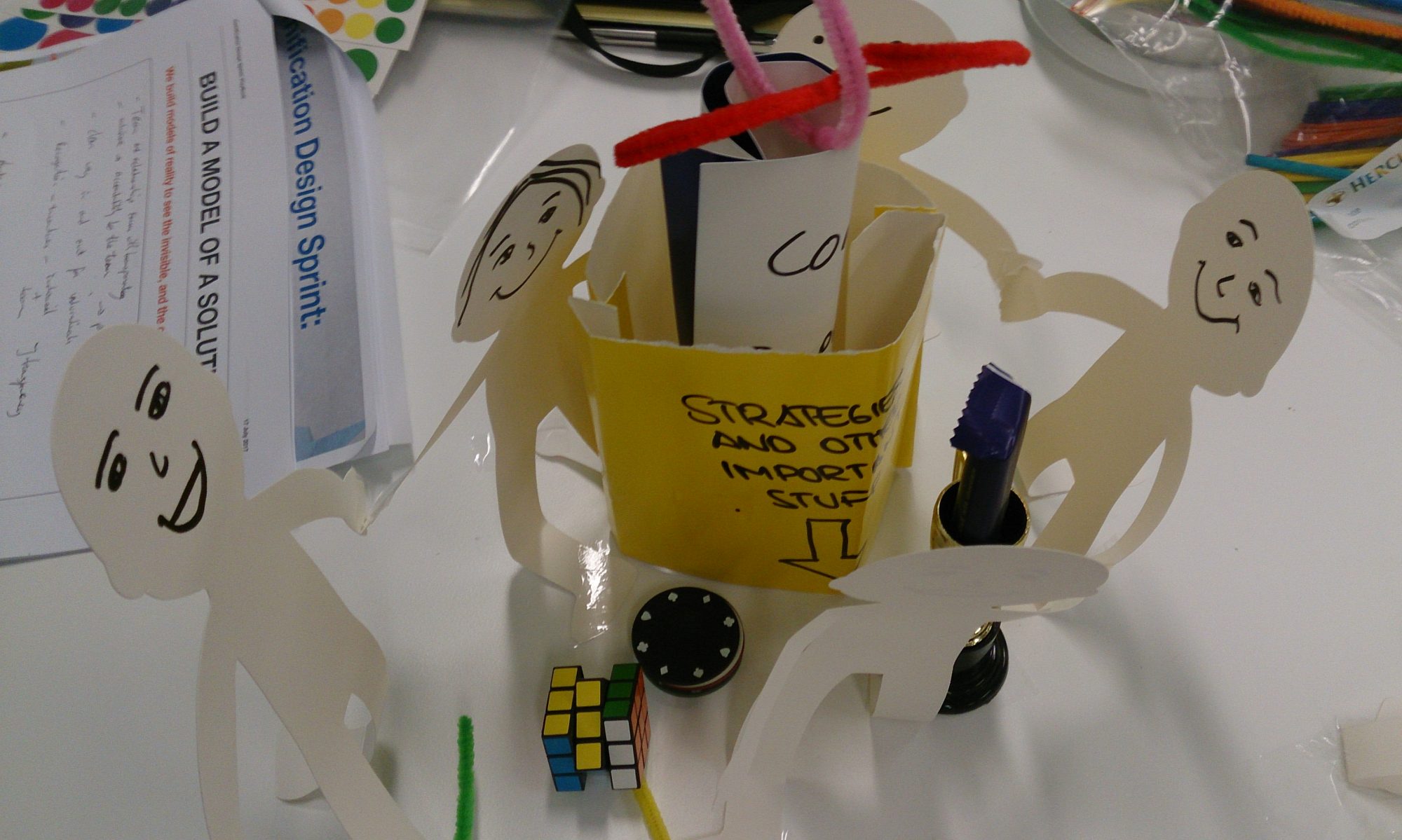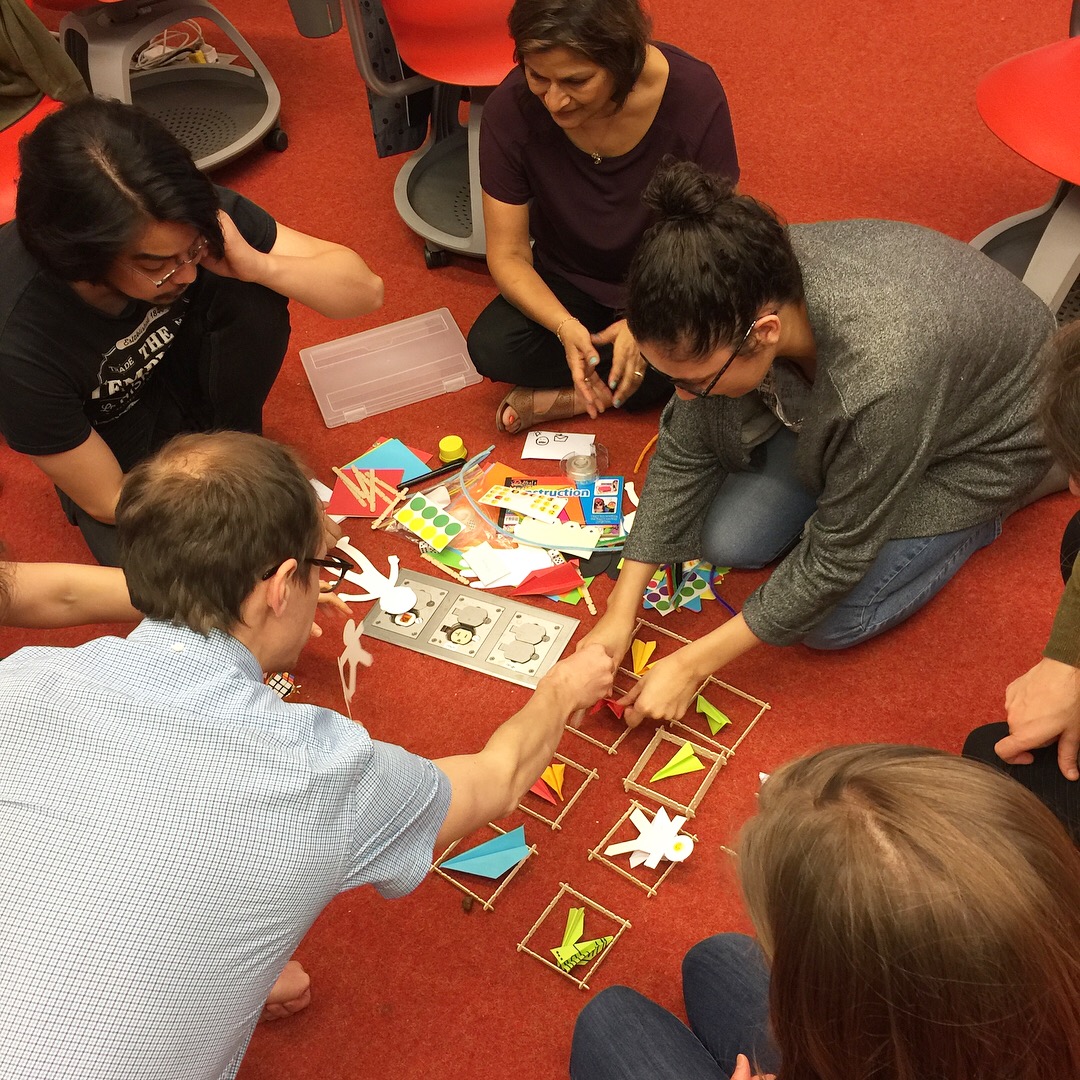What is a Gamification Design Sprint
A Gamification Design Sprint is a high-energy, interactive design approach used for business problem solving and creating innovative product or service solutions. At the core of a Gamification Design Sprint is using an agile approach to developing a Minimum Viable Design, that incorporates systems thinking, game design and creative problem solving. Most importantly, the process is a playful and interactive ‘learning by doing’ experience.
Most design disciplines maintain that their goal is to solve ‘wicked problems’ and most have a four-phase design process to achieve this. The model that I developed and published outlines a set of key activities over four phases of problem and empathy discovery, reframing through creative problem solving, envisioning with game thinking elements and creating prototypes.
The real magic however is not in the model, but the process which engages workshop participants in ‘opening possibility spaces’ and getting out of ‘entrained thinking’.

Sprints are engaging, experiential and experimental
My philosophy is this: your staff, your customers and your stakeholders are the experts, and solutions are contained within the problems. Create a space for them to freely and without prejudice collaborate and be creative. My technical expertise is there as a backup for them, and all I need to do is coach them through the process. The process is also playful, so we engage in different activities from theatre improv, game-storming and body-storming to limber up our creativity and free-thinking. This helps to build trust, respect and co-operation in the sprint team. Some of the constructs underpinning the process are:
- Visual thinking and model building to map out complex problems systems models
- Applying game design principles to reimagine business systems and processes
- Using play to stimulate creativity and imagination to rethink systems constraints
- Using psychological archetypes to build empathy and identify design bias
Who has played with Gamification Design Sprints?
I’ve been working with creative or innovative organisations looking to learn new skills and approaches to problem solving. Most have pressing challenges to resolve – and these range from:
- Developing a new business model, product, service or process – or refining an existing one
- Human resource issues such as improving staff motivation and morale or reviewing performance management systems
- Learning and development challenges looking to improve the engagement and learnings from their courseware
- Leadership teams looking to understand more about engagement, collaboration and co-design as part of wider digital transformation initiatives.
- These sprints are used effectively with all types of organisations ranging from start-ups to established private and public sector organisations.
The common denominators in all the sprints that I’ve run is consistent: curiosity, a willingness to experiment, openness to new ideas, a burning concern that change is needed in their organisations, and a belief that they need to engage their stakeholders in new and meaningful ways.

Where to from here
Gamification as a design discipline has been steadily growing in sophistication as more PhD researchers and industry practitioners are publishing their work and refining design processes and technologies. My own research and practice is ongoing as I further develop and refine the design sprints into domain specific practices such as innovation, digital transformation, human resources and learning and development.

